This is the follow-up of the three-part blog series of the insightful conversation between film professor, media producer, theorist, and activist Alexandra Juhasz and writer and filmmaker Peter Snowdon.
Alex
Peter, I really love the way you write about each of the distinct videos in your book The People Are Not an Image, your deep close readings. You let each small work take time on the page to stand as a separate complex object, while at the same time making larger claims about vernacular video and its place within these movements. YouTube videos so rarely get seen (by critics) with the kind of attention we more typically offer to great works of media art. And then, your writing about the video itself produces that very feeling of mediated-connectedness, or maybe even friendship that we’ve been discussing.
You dedicate each chapter to one video, often beginning with a transcript of audio and some screenwriting direction to let us see the piece, followed by an analysis that develops through what you learn in conversation with each short work. Chapter One, “A Happy Man,” focuses on a video by rideaudur, posted January 17, 2011. You begin:
In this short clip, we hear more than we see a man walking up and down along a main artery (“the avenue,” as he calls it) of a North African city. As he walks, he improvises a poetic panegyric in honor of the people of his country and the freedom they have won for themselves. Yet the people of whom and to whom he speaks are nowhere to be seen. Indeed, as the clip progresses, it may seem that he is less assuming their existence than trying to conjure them into being. (pg, 29)
9. A Happy Man from Peter Snowdon on Vimeo.
Peter
That particular video is one that means a lot to me, as I believe it did to many other people. It is one of the few that made it into my film more or less unedited. And a large part of what I was doing in the book came from something that occurred to me fairly early on when making the film. I had to accept that, as a general rule, I couldn’t keep the videos whole, that I had to edit them. And so the writing became, in part, a project to restore the integrity of each video.
I was seeing short films coming from a place that I had never expected, which were made in an audiovisual language that seemed both very new, but also coherent with languages that I knew from traditions of experimental media work that seemed to me to have nothing to do with this place and time, and which may or may not have been particularly political in their intent. So, when I was describing these individual videos, I really wanted the writing to recreate for me, and thus for the reader, this sense that this may only be three minutes and 27 seconds of screen time, but this is an actual “work,” as solid and as densely wrought and as present as anything you might pay to see in a cinema (or, more likely, a cinematheque…).
If I insist on the sensory and kinetic qualities of these videos, it is because the videos themselves insist on them. They are above all exercises in the concrete, and as such, acts of resistance against the kinds of abstraction that characterize both the practice of government and certain species of intellectual discourse. (…) They do not offer etiologies, genealogies, or any other type of rationalization. They do not explain, much less explain away. They are presentations rather than representations. They are committed to appearance as a space of action in and for its own sake, not as something to be decoded or demystified. (p. 3)
There is so much that happens in each video which needs to be recognised and honoured. So, in some sense, it was a relief to be able to just attend to one video at a time, and not to have to be also thinking of all the others, or negotiating between them, as I had in making the film where I began to understand the work of editing not just at a practical level, but also more theoretically. My hypothesis was that these videos could together tell a story that would be intelligible without any external assistance, without the need for narration or context. That they could do that work themselves, and that all I had to do was trust the videos. But then, I discovered that it wasn’t enough to trust the videos – they also had to accommodate each other, to make space for one another, without any one of them cancelling or erasing the others. Just as you can’t have a collectivity in which each person does nothing but proclaim their individuality, you cannot have a film in which each shot runs its full unedited length. And in this precise sense, editing is, by its very nature, a political enterprise.
Alex
In this sense, so too is videomaking. It is always an act of selection, framing, argument-building, and affect-production in service of communication or inspiration. But I need to emphasize that not all vernacular video is political video, and this is where I find your close readings and associated theorizing of this body of work so important. You are writing about video that engages self-documentation with a revolutionary duty. You outline the many conditions that need to be in place for people-made video (always in conversation with or even as corporate media) to be active in a project of world-changing and revolution-making. You bring to our attention a kinetic, affective regime, in its formal dimensions, and as a body of video made of individual work by individual people—how this makes us feel, and what it asks us to do.
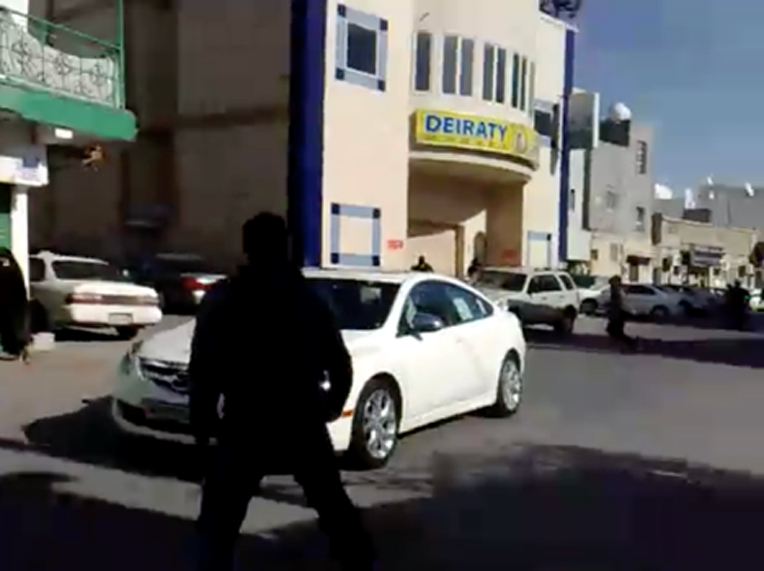
Figure 10: Still from The Uprising(2013) / Youtube video uploaded by feb tub, February 14, 2011 (click image for video source).
Peter
My focus was on disrupting definitions that decree what is and is not possible. I was consciously writing in opposition to a lot of the rhetoric and ideology around YouTube and social media which seemed to posit a form of “sharing” which is actually not an act of sharing at all. In particular, the term “vernacular” is often used in a very apolitical, and watered-down sense. I wanted to reclaim the word vernacular as that which is outside of, and resistant to, the administered and governed life. I took this from Ivan Illich, who I had first read back in Paris in the 1990s. It wasn’t an accident that these videos which seemed to be contesting the conventional, Euro-American sense of the vernacular as a kind of inoffensive amateurization, rather than a space of resistance and contestation, were happening in these specific places and at this particular time – that is, within an Arab world where, as Mohamed Bamyeh has argued, a centuries-old “civic ethics” still persists today, not as some sort of ossified tradition, but as “an old, rational and enlightened common attitude” that continues to guide people as they work through the trials and tribulations of everyday life. In these countries, there is still a certain real experience of shared space as itself a form of never-ending negotiation, and community as something tangible, not merely aspirational. And this is true not only in working-class neighbourhoods or farming villages, but also to a large extent for many strata of the middle classes, including those who might be seen to have benefited from economic liberalisation, in so far as their position remains contested, and often fragile.
Alex
You use the word vernacular two more times in the book. On top of “vernacular video,” you also take up this verb, vernacularization: video that records daily life and in so doing understands this new kind of visibility as part of a larger political project that you say exceeds the local. It must be local to make it vernacular, but the vernacularization occurs in its mediation and distribution when technology assures that the daily exceeds the local. You claim that this is performative. There’s a necessary self-awareness in the enacting of the self, and the place, and its dailiness, which is written formally and received affectively and hence politically.
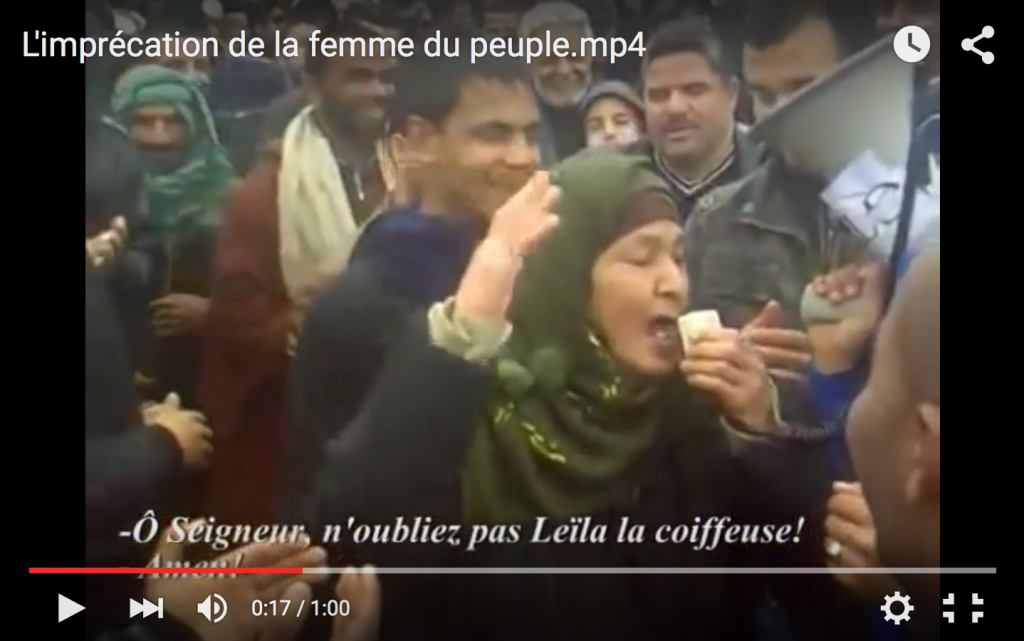
Figure 11: screengrab of YouTube video uploaded by webamri amri, 29 January 2011 (click image for video source).
I wrote something quite similar about AIDS activist video when I was theorizing my own community-based video activism by, for, and about urban women of colour and AIDS. While realist practices might seem to outsiders as untutored, unintentional, and not of the more rigorous practices of artists or intellectuals, media coming from and for a movement knows itself with a formal self-awareness. This is a political awareness because it is generated through an often dangerous personal act of coming into voice and community. It is performed and received as such by viewers from that place. That’s easy to feel for its local viewership (which is the point), but harder to name for others, I think. And that’s what you’re attending to when you so carefully engage in close readings of the quick, daily, but connected mediation of actual bodies and their political lives.
Can you talk about the tension between how vernacular videos document actual people, bodies, and their political lives and how these fit into vernacular anarchives: a complex assembly of all these discrete videos—and their people— that is bigger and more convincing than what any one video can do.
Peter
Maybe this goes back to what I alluded to before, that my own formative experiences of community were not experiences of unproblematic self-identity, but rather of complex and even disruptive forms of displacement. Community doesn’t always coincide with itself, or with the local. Perhaps it would be better to think of it as a certain way of being with displacement and non-coincidence, and not as their absence or their abolition. And then, community always needs an outside. The question is what is the relationship to that outside – is it generative, or is it simply erasure and violence? Somewhere we’re afraid of? Or somewhere we can escape to?
These videos are very much addressed to an outside—to multiple outsides—in a way that is not strictly bounded or policed, though at times there are boundaries which are, and have to be, very firmly asserted. But in general, their address is open. They don’t exist as atoms but are already an assemblage. Even in each individual video, there’s a sense that it’s the collectivity of videos that matters, not any single gesture. And the power of that assemblage is not simply numerical. It’s not simply a question of how many people are in the street, or how many videos take over the internet. What matters is to create an intensity which can attract people to it. So, between the individual video and the anarchive as an open totality, there are all these specific associations and assemblages that come into being for a certain time, and act as attractors of energy, as provisional poles of clarity, and as creators and distributors of meaning.
If filming was a means of participation for the filmer, then the videos that were produced and uploaded were not just documents of that participation, but rather (in the most direct sense) invitations to others to act in their turn. (…) More specifically, they were inviting the viewer not only to emulate but also to compete with what they had seen, to try to exceed the model in revolutionary fervour. (p. 175)
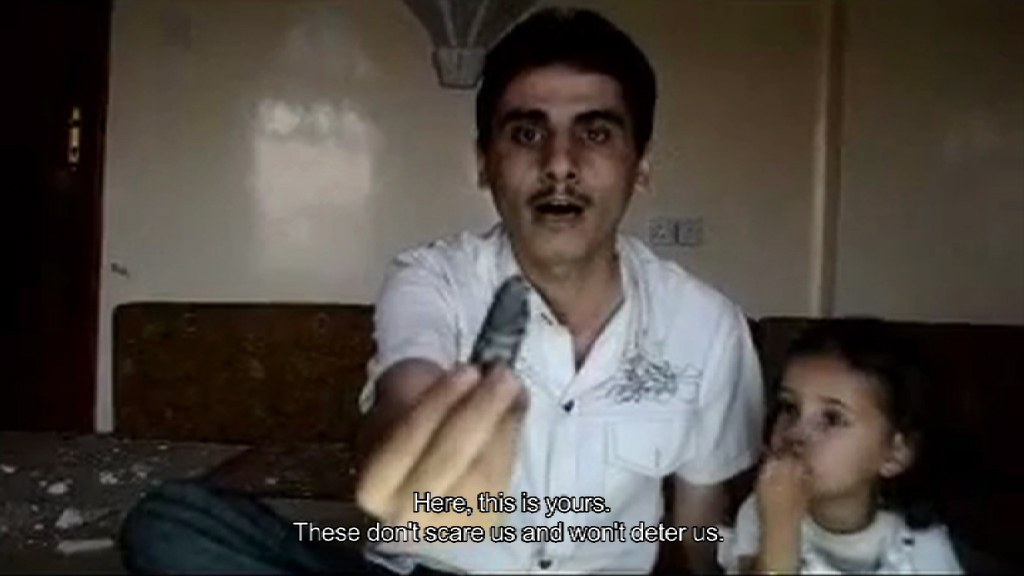
Figure 12: still from The Uprising (2013) / YouTube video uploaded by 5000zukoo, September 21, 2011 (click image for video source).
Alex
You suggest that the possibility of an outside is critical for an ethics of solidarity: what you call “a we.” This calling comes from of a local, every day, but also, of course, exceptional I that is living and taping in-community in-revolution. There could be, or perhaps there must be, an anticipated outsider—a you—who is called by this performative address, someone who is outside the local, someone who needs this representation, someone who might connect. That is one reason, among many, why each I is making and distributing each short videotape: to be seen and heard, yes, but also to connect to other I’s in this articulation. In your book, you write about that person, that outsider, that imagined or hailed viewer, as being close by, in proximity, although not exactly local: ideally in one of these countries in revolution, and thus called not just to look or connect but also to the/their street. The call asks: who’s going to join us in the street and become the we?
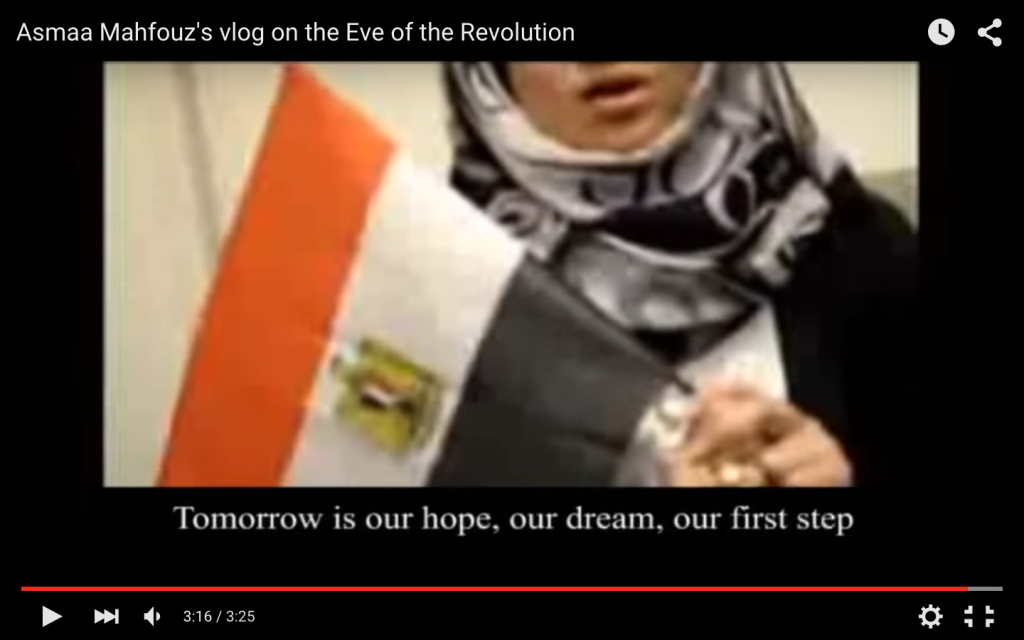
Figure 13: screengrab of YouTube video uploaded by Iyad El-Baghdadi, 2 February, 2011 (click image for video source).
But what of the “we” who is not nearby, not in or of the region? We who hear the call and cannot respond. Before the internet, if you made a work like this it would stay local, and it would take many years for it to circulate to others around the world: a local call displaced by time. You suggest that for this body of video from the Arab Spring, and because of social media, this nearby in place happens in real time. But I think about this differently. I actually understand the production of this kind of “we” as a failed promise of YouTube; the deep lie of the internet; and an aspect of your theorizing of vernacular video that is not yet complete. What does it mean when we reach that person, those people, in great numbers—really reach an outsider, and you, who is distant and other. Yes, the reaching happens, the call is heard, but the associated doing that you build into your theory of vernacular video stays impossible, even if it is felt in each work.
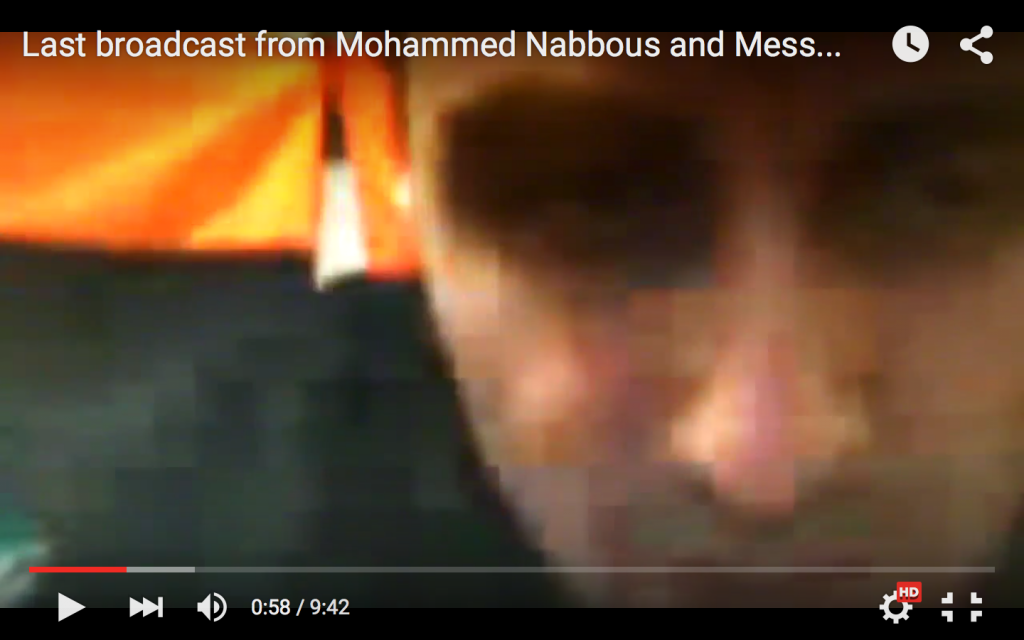
Figure 14: screengrab of YouTube video uploaded by LLWProductions, 20 March, 2011 (click image for video source).
The energy of the call and response to the street that you find so intoxicating in these videos is consumed differently for another “we” that is made up of distant viewers, like me (and not you!), even as or perhaps because the intoxication of the local and the revolution is so very evident, so skillfully produced, in each iteration. Voices from afar on the internet are intoxicating, yes, and just as often also paralyzing. We can’t help, we can’t go there. And things on the internet, even when they are intoxicating, are also always interchangeable. For that other, for this we, there is another consumption and a different politics. What is the value of vernacular video for viewers who can’t join in the street, who never will even as they are moved by the videos, if momentarily but frequently?

Figure 15: screengrab of YouTube video uploaded by LLWProductions, 20 March, 2011 (click image for video source).
And then, of course, there’s difference in time as well as distance. Over time, the videos stay there online, and they also stay the same. Do they continue to call for a “we,” even as their insurrections are over, or have failed? How do they work now, still there in their “anarchive.”
Peter
In 2001, there was a major uprising in Algeria which almost brought the regime to its knees. I remember following this, both through daily reports in the French and Algerian press, and by listening to stories told by my friends, which they had heard from their families back “home.” Shortly afterwards, I came across Jaime Semprun’s book, Apologie de l’insurrection algérienne, which had a huge impact on me (though I later understood how partial some of his sources probably were, and thus the potential for other interpretations of these events). I remember how at the very end of this short text, he writes that, while we cannot know whether this insurrection will fail or succeed, what we do know already is that there has never been a group of revolutionaries who were so completely isolated, both inside their own country and outside it, as those in Algeria in 2001.
From this, I inherited a sense that an essential question for those on the outside – and so, for me, in 2011 – was, what could we do to address and alleviate this isolation? That is, how could we retrieve and restore forms of international or transnational political practice which already, in 2001, seemed to hang in the balance? This was very much in my mind when I was working on the film and book. Semprun also says that anybody in Europe who is following what is happening in Algeria through the newspapers can only feel ashamed of their own failure to stand up to the forms of oppression and dehumanization under which they themselves live.
And so, it seems to me that he suggests two axes along which we can approach these different degrees or kinds of outsiderness: the transnational other and the ethical other. And both these forms are in need of re-activation.
While obviously most people who watch these videos outside the places where they were made – or even within those countries – do not act, that is not necessarily the fault of those videos. If we are in Brussels or Paris or London or New York (or in some province of one of the countries of which these cities claim to be in some sense the capital) and we do not act, it is not because there is nothing to do and no one to act with. After all, even if we do not go there, “our” governments often do, with armies and weapons that are operated by our compatriots and funded by our tax dollars. And the people who live “there”, and whose only aspiration is perhaps to continue living there in peace, increasingly and massively take the enormous risk of coming here, because the risk of staying where they are even one day longer has become quite literally intolerable.
So perhaps we should see our inaction rather as one symptom of a larger problem – a problem of modes of isolation, demotivation, and disempowerment, that do not require literal physical distance to play a structuring role in our lives, and which can be questioned and ultimately overcome starting in many places, not just one. And perhaps our anger and frustration with these videos, and with the passivity-enchancing effect we imagine they may regularly (but not infallibly) have on people around us, is just one part of a larger process that is actively pushing many of us to act, not just against video, but against the causes of (this kind of) video, too.
In any case, we cannot isolate video as one total self-sufficient moment or action, and then find it wanting. No single form of communication will ever be adequate in itself. Video may be useful as part of a larger process, but it is not a substitute for that larger process. And the basis of that larger process, if it is to be fruitful, has to begin with the recovery of lived practices of mutual support and trust, not only within, but also across the frontiers and barriers that are used to divide and separate us.
So, perhaps what we are lacking is not so much the means to act from wherever we may happen to find ourselves, but the capacity to see through the barriers that are carefully placed in the way of our impulses to solidarity. The question, then, for the images of vernacular video would be: do they act to naturalise those barriers, to make them seem even more immovable and opaque? Or to reveal them for what they are – artificial, impermanent, and fragile in proportion to the force that has to be deployed to defend them?
In any case, we cannot simply say that for we who are “outside” or far away there is nothing to do, that there is no concrete way to convert affective solidarity into action. The crucial role played by so many diasporas, and their allies, in the decolonial and national liberation struggles of the 20th century is sufficient to demonstrate the opposite. And today, when the world is even more intricately interlinked by transnational infrastructures of circulation and extraction, the potential for strategies of distributed solidarity and disruption is, if anything, even greater than in the past! Andreas Malm’s recent call to revive the North-South anti-imperialist fronts that characterised the second half of the 20th century as the only strategically adequate response to climate change is just one example of how this potential could be channelled into meaningful action.
But beyond that, I think these videos and the worlds they invoke should also encourage us to question our definition of “action.” Historically, many of the most potent forms are in fact assertive inaction: the boycott, the strike… What we saw across the Arab world in 2011-12 is perhaps better figured as a series of massively disruptive interruptions in the forms of habitual activity that support and sustain existing forms of power and governance. Occupying squares, or marching slowly down streets, are themselves, first and foremost, ways of bringing traffic to a halt, of preventing the unquestioned continuation of all those other connections between us – the ones we do not choose, the ones we may not want.
In a world that is running to its ruin in large part because of the psychotic addiction of a small but influential minority of people to producing things that nobody needs (and to producing the desires that can make those things seem necessary), the refusal to produce anything, to “do” anything, even to desire anything, can still, I think, be a radical act – and depending on how it is configured, perhaps, the most radical. And this potential – to down tools, to cease to consume, to withdraw our attention and our participation, to become not only more self-reliant (materially, emotionally, and intellectually) but also less productive, less visible, less “active” – is always available, everywhere. It is not equally possible for everyone, of course; but it is equally available. Making it equally possible, equally imaginable – that is the work.
Alex
So, your work with vernacular video, your new book about it, and this conversation all focus on ethical media engagements: through friendship, hospitality, and lived community. These are less actions than better ways of being human, together, by making use of technology, as needed. You suggest that there is a vernacular form of mediamaking that produces, invites, and moves this ethics of engagement. I think we are together suggesting that deeper commitments—beyond a received-hail and its linked feelings of being seen or a momentary exhilaration—must align with the call to connect through representation for this work to be revolutionary or perhaps transformative. Are we making a case for the mediated local, a known, felt, and sharable here-and-now of a specific person for a known people?
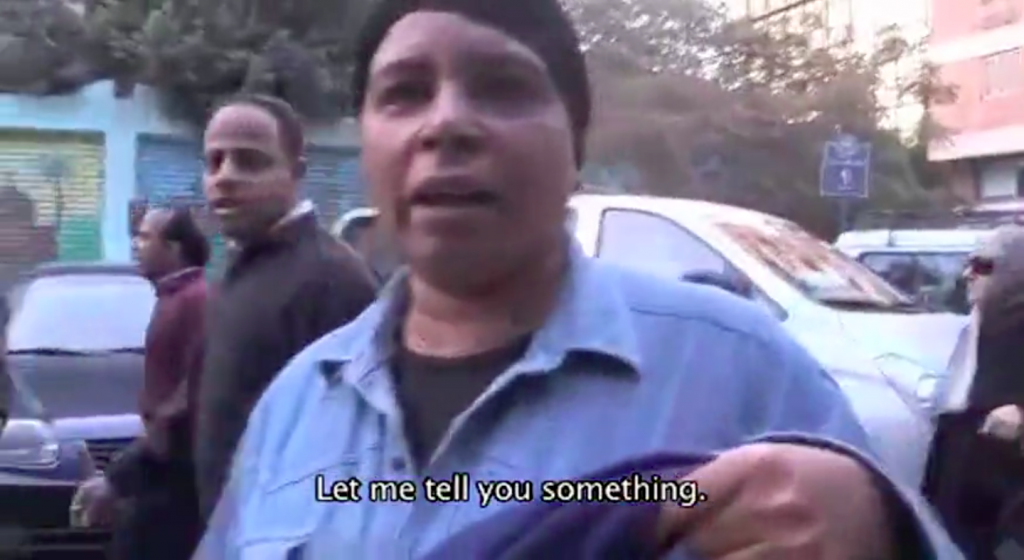
Figure 16: still from The Uprising / YouTube video uploaded by FreedomRevolution25, January 24, 2012 (click image for video source).
Peter
I certainly don’t want to minimise the importance of the local in any way. As long as our economies and lifeways have not been completely deracinated, then the local will continue to be where many of our most important relations emerge and flourish. But I don’t want to fetishise it, either. There are many different kinds of relationships that we can embrace on many different scales. Effective change will probably require us to mobilise across many or even all of them, in different combinations and for different purposes. Strong linkages, after all, can surely work both ways– to facilitate trust, but also to block change. The devil seems to me, as always, to be in the detail.
As for the question you raise about what happens to these videos when the insurrections are “over,” when they have “failed” (whatever that means – and without denying that, in one very real sense at least, their immediate aftermath has been catastrophic both for those from this region who were most directly involved in these movements, as well as for the larger society around them), this is a very important one. But in writing, I have always felt that part of my work is, precisely, to keep the question of success or failure open. In 2013, 2014, many other people were writing about these events as if they were already history. And to me, already then, that just seemed wrong.
In 2013, I spent almost two months in Egypt. And I remember the second time I came back I was physically depressed by the experience – by what I was picking up from what was going on with my friends. Most of them were not frontline actors: they were of my generation, already in their late 40s or 50s, and it was often their children who’d been in the streets more than they had. And I wanted to write against that depression, and all its suppositions and assumptions. I was looking for something like an antidote. So it seemed to me more important at the time to try and keep this idea alive: that these videos were still speaking to us in the present tense. And therefore, that the possibilities that they had opened were somehow still alive. And it is part of the nature of moving images – their perpetual, ineliminable present tense – that they are constantly moving us to respond to them as if they were present – as if what they show us is still unfolding. Even if that presentness is, in some sense, a fiction – the fiction that is embedded at the heart of every act of viewing an audiovisual document (or of reading an essay, or a poem, or…): that the past is not yet past, and so that the future of that past might still turn out differently. That it, somehow, still depends on us, on what we choose to do.
It was the same when I made the film: I wanted it to end in such a way that whatever was in the newspaper the next morning, I wouldn’t feel like I’d foreclosed a future that was still unfolding, by over-committing to one specific concrete narrative, to one particular outcome, whether it be labelled “success” or “failure.” And, when I watch the film again myself, I see how my own response varies wildly from screening to screening. Of course, that’s true of all images, and of all art and all media. Our perception, our changing awareness, is an index of how we’re reading ourselves into the image at any particular viewing. Our reading, our response, is always a function of the state which we ourselves are in. Our ability to engage or not to engage with what an image may be proposing varies widely, and often in ways we are not aware of. This is part of the radical openness of media – that they expose us also to our own radical openness, and thus, ultimately, to our own capacity for change, both personal and collective.
––
Read the final section of the conversation here.

